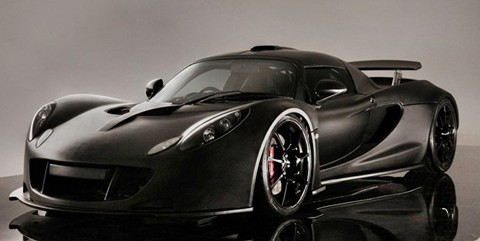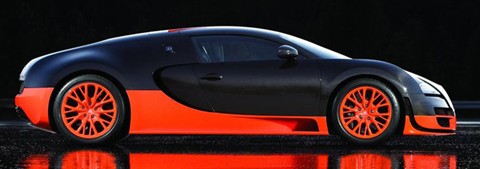Steve Saleen is known as a tuner of American cars, particularly of Fords. Then some time during the 1990s, he developed a concept wherein his goal was to create a true American supercar. This marked the beginning of the story of the Saleen S7, one of the fastest cars that ever came out of American soil. During its release in 2002, it is deemed as one of the most technically advanced cars in the world, and one of the distinctions that it had then was it was the only American street-legal car that packs over 500 horsepower in stock trim.
Sure, the S7 got some serious love from both enthusiasts and critics alike, praising its unbelievable quickness and technological advancements. But how time quickly passes! Within 3 years, automotive engineering worldwide has improved so much that 500+ horsepower is now much easily attainable than when it first appeared. Now, the world beating American supercar has a lot of competition, and if they don’t do something, they just might fall behind the wayside of the supercar wars. Noticing this, Saleen has a plan. His team upgraded the S7 to the point that it has become a whole new car, ready to take on new challenges. This car is the Saleen S7 Twin Turbo.
Performance
Of course, the headliner for this car is in the name: twin turbochargers are now equipped to the already formidable 7000 cc V8 engine found in the S7 (more on the engine later). But, there are more changes in this car than just the engine. If you would look closely, in order to improve aerodynamics, modified front fenders, as well as new diffusers and spoilers were installed. The result: a 40 percent decrease in drag and a 60 percent increase in down force.
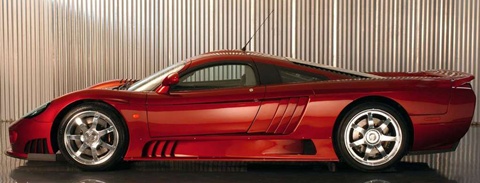
Braking
A completely revised suspension makes this car firmer during braking, accelerating, and turning. A dual stage shock absorber allows variable spring rates during different speeds, progressively getting sharper handling as it gains speed. The large brakes co-developed by Saleen and Brembo for this car, 15 inch discs in the front and 14 inch discs in the rear provide some serious stopping strength.
Engine
And then, there is the engine. The same in house developed 7000cc V8 engine makes its way to the S7 Twin Turbo, and it possesses a lot of state of the art equipment from the intake down to the exhaust. 2 turbochargers capable of pressurizing air up to 5.5 psi, are mounted at the high performance exhaust system, boosting performance to another level.
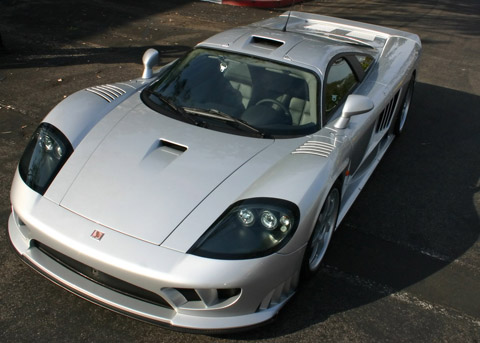
During the addition of the turbos, the hydraulic lifters of the engine are replaced by solid lifters. All these modifications are enough to raise the engine’s output to an unbelievable 750 horsepower and 700 lb/ft of torque. And amazingly, this is still a clean engine, featuring an extensive emission control system and is compliant to OBD-II standards.
With all these raw stats, it is pretty obvious that the Saleen S7 Twin Turbo can beat even the most extreme of hyper-cars. Somehow, the already advanced S7 was able to surpass itself, and was able to redeem its lofty place as one of the absolute best sports cars today, and maybe of all time.
Specifications
| Vehicle Type: Super Sport Coupe | Base Price: $555,000.00 |
| Length: 188.8 in. (479 cm) | Width: 78.4 in. (199 cm) |
| Height: 41 in. (104 cm) | Wheel Base: 106.3 in. (270 cm) |
| Curb Weight: 2950 lbs (1338 kg) | Ground Clearance: NA |
| Engine: Twin Turbo V8 | Displacement: 7000 cc |
| Horsepower: 750 HP | Max RPM: 6300 RPM |
| Torque: 700 lb-ft @ 4800 rpm | Transmission: 6-Speed Manual |
| 0-60 mph: 2.8 seconds | Top Speed: 248 mph (399 km/h) |



Drive with two Saleen S7 Twin Turbos























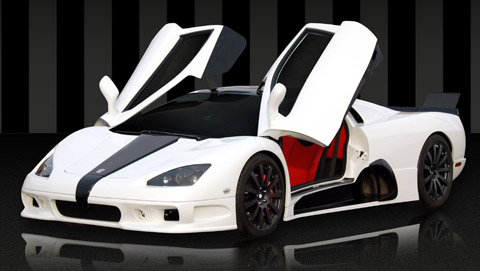

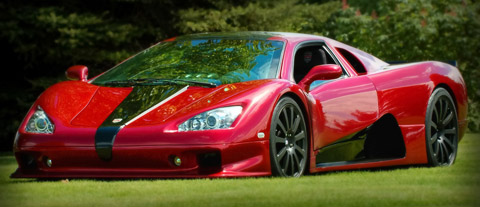
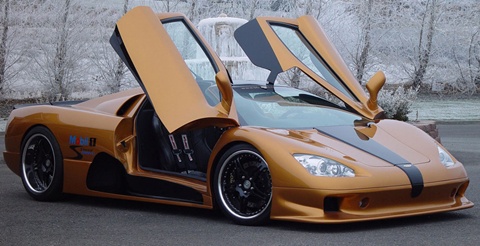















 The car has wider and rigid wheels and tyres. The all new Jaguar XJ comes with larger wheelbase that is responsible for butter-smooth riding experience.
The car has wider and rigid wheels and tyres. The all new Jaguar XJ comes with larger wheelbase that is responsible for butter-smooth riding experience. Braking and handling are unmatchable in this new machine which is also the flagship model of the company. The vehicle is equipped with front ventilated disc brake and rear disc brakes. The brakes are fitted with latest ABS systems which ensure instant halting at any level of speed. Features like Adaptive Dynamics, air suspension and quick-ratio power steering help to handle the four-wheeler in a much better way as to give a fine riding and control. The Jaguar XJ advanced lightweight aluminium monocoque bodyshell is very much to add faster acceleration and more precise handling. Handling is also refined through Adaptive Dynamics, air suspension and quick-ratio power steering.
Braking and handling are unmatchable in this new machine which is also the flagship model of the company. The vehicle is equipped with front ventilated disc brake and rear disc brakes. The brakes are fitted with latest ABS systems which ensure instant halting at any level of speed. Features like Adaptive Dynamics, air suspension and quick-ratio power steering help to handle the four-wheeler in a much better way as to give a fine riding and control. The Jaguar XJ advanced lightweight aluminium monocoque bodyshell is very much to add faster acceleration and more precise handling. Handling is also refined through Adaptive Dynamics, air suspension and quick-ratio power steering.

